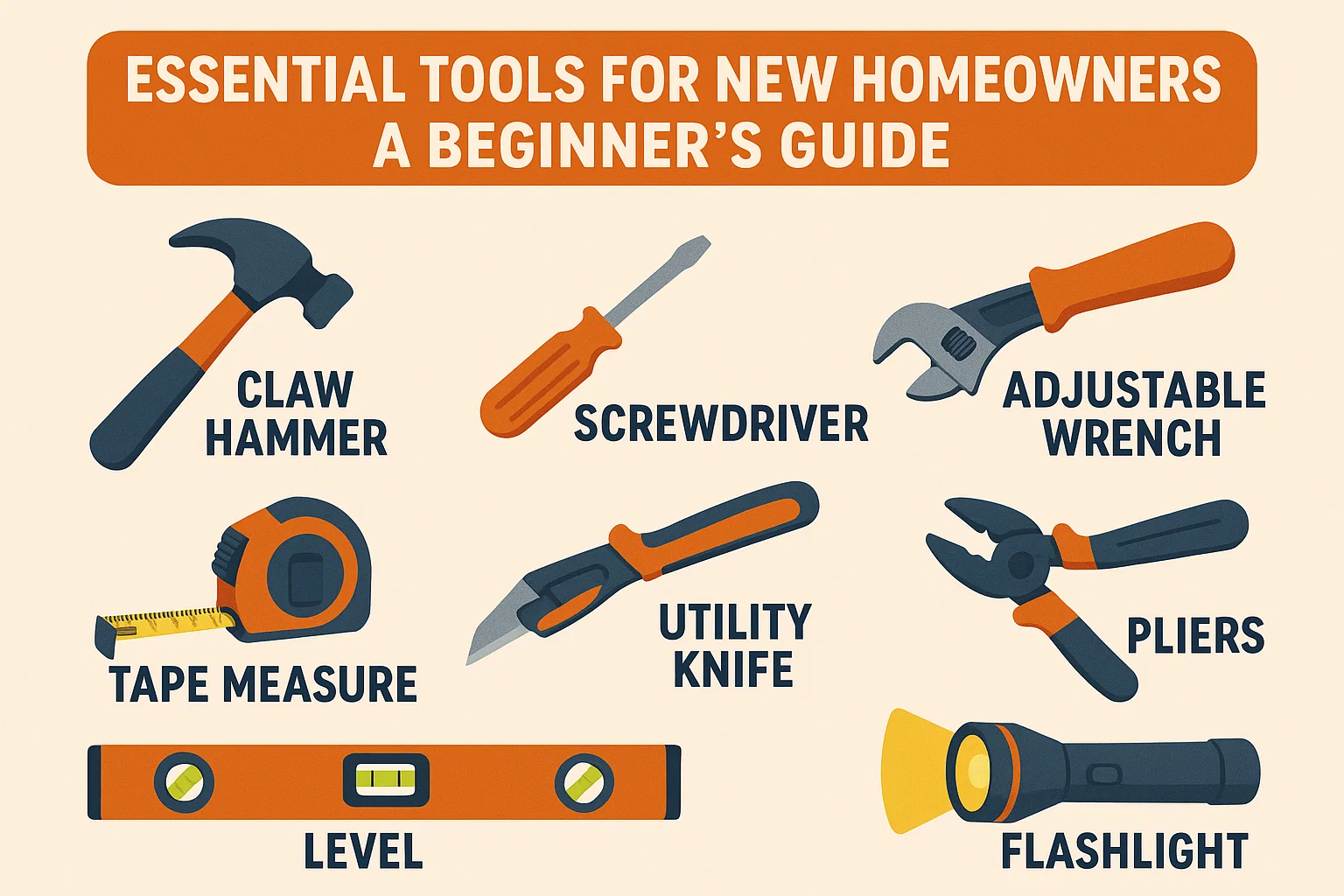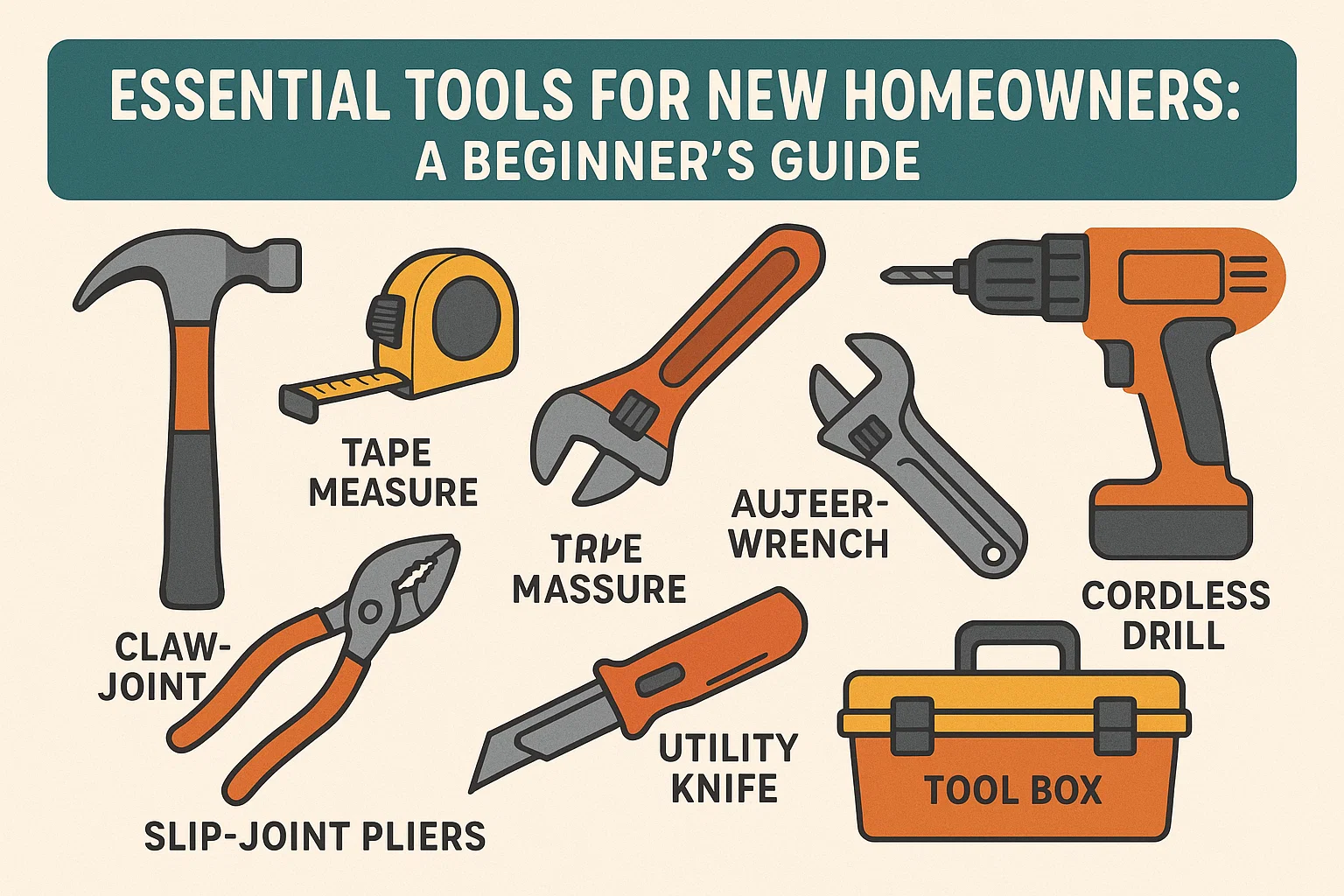Essential Tools for New Homeowners: A Beginner’s Guide

Essential Tools for New Homeowners: A Beginner’s Guide
Stud Finder
This tool won’t help you find a date, but it will locate studs in your walls! Hanging heavy frames or shelves directly on drywall risks damage, so always anchor them to studs. Stud finders come in two main types: magnetic or density-sensing. To use either, turn the device on, place it against the wall, and move it horizontally. Lights or signals will indicate a stud’s location.
Pro Tip: Studs are typically spaced 16–24 inches apart. If your finder detects a “stud” closer than 16 inches, it might be plumbing!
Power Washer
Keep your driveway pristine with a power washer. For gas models, check fuel and oil levels first. Electric versions simply need plugging in. Attach the pressure hose to the spray gun and connect the other end to the machine. Secure a garden hose to the washer, then test the pressure on grass before tackling your driveway. Start gently and increase power as needed.
Power Saw
Circular saws are DIY staples for straight cuts. Measure your material (like wood) and secure it on a clutter-free workbench. Adjust the blade depth to no more than ¼ inch—less exposure means safer use. Squeeze the trigger and guide the saw steadily. Never lift the saw mid-cut! Opt for models with dual safety triggers (button + trigger) to prevent accidental starts.
Breaker Box
Your home’s electrical hub! Open the panel to access labeled switches (if you’re lucky). If unlabeled, test each switch to map outlets/appliances. Label them immediately to save future headaches. Cutting or restoring power is as simple as flipping the right switch.
Level
Ensure pictures hang straight with this tool. A basic level has a liquid-filled vial with an air bubble. Place it on your object and adjust until the bubble rests between the two center lines. For larger projects, use levels with multiple vials for horizontal and vertical precision.
Power Drill
Master these components first:
- Chuck: Holds the drill bit
- Clutch: Adjusts torque (twisting force)
- Trigger: Activates the drill
- Forward/Reverse Switch: Controls rotation direction
Insert the bit, tighten the chuck, and set the clutch—low torque for drywall, high for metal or thick wood. Plug in (or charge) the drill, then squeeze the trigger to start.
Safety First: Always wear gloves and goggles, check electrical connections, and stay mindful of your movements. Happy DIY-ing!




